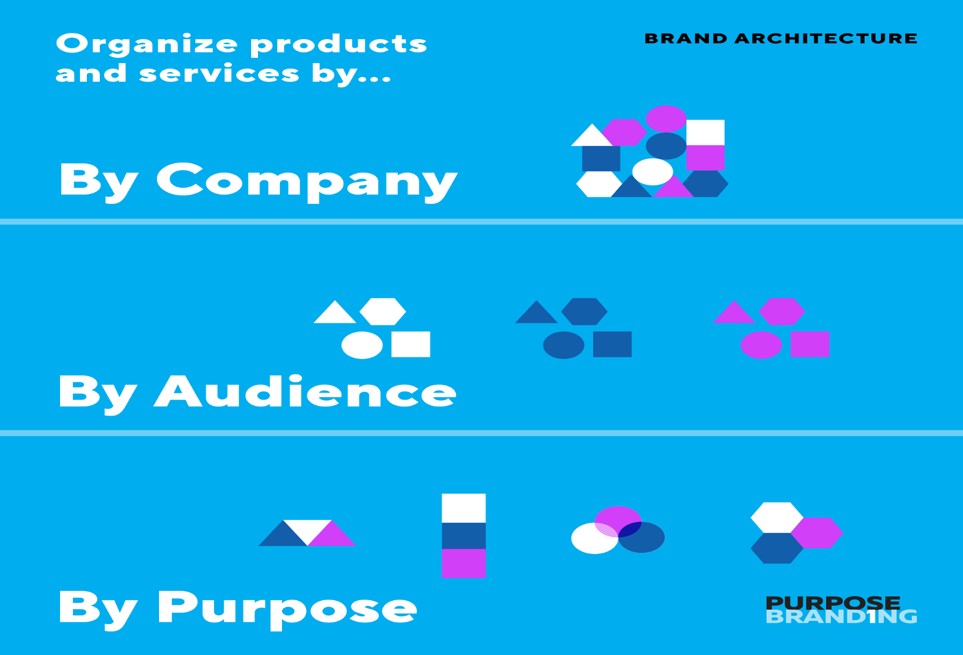Emotion should not be disregarded in the promotion of coffee consumption. Coffee drinking is associated with pleasure and the habit of coffee drinking may be linked to specific lifestyles.
Communicating
the benefits of coffee and the positive aspects of coffee drinking is important to retain consumers and to recover those who have been lost. However, this approach may be insufficient
to attract new consumers.
This
task may also require the emotional appeal of well-orchestrated marketing campaigns that involve social values, consumer
aspirations and the pleasure of coffee drinking.
Promotional
tools should be used in combinations for mutual reinforcement of the respective impacts.
Over-reliance on one or two tools may be risky.
When thinking of Brand Architecture think of the word ‘architecture’ which speaks to the fundamental design and structuring. Brand architecture therefore speaks to a system of organizing brands, products and services to aid consumers or your target audience to be able to relate to your brand. A well-designed brand architecture enables consumers to form opinions and preferences for an entire family of brands by interacting or learning in a wholesome manner with the ‘family’ or brand.
The brand architecture defines the role of each brand and acts as a guideline for the interrelationships between the brands in your organization; it is therefore a system which conceptualizes and strategically organizes the positioning of the brand. The relationship and inter-relations of products and brands become important; when thinking about adding a new brand or product, it is crucial to understand where it will sit within your organization.


It may seem odd to list and discuss branding at this juncture. Branding is usually associated with coffee products themselves rather than coffee drinking or habit formation. Branding is included here as a reminder to marketers that it may have an important role in campaigns to develop coffee consumption in two different manners: to create a strong identity for the program and to inhibit free riding, i.e., benefiting from the program without sharing its costs.
To brand a campaign to increase coffee consumption by means of a logo, a slogan or a concept may help recall immensely. However, one must make sure that the "buzz" phrase or "cute" idea does not become an end in itself: everybody repeats it only because it has gained a life of its own! It no longer reinforces the promotion of coffee consumption. This risk seems to be greater with branded products than with product categories. A smart play on words involving coffee drinking or an attractive "drink coffee" logo that catches and starts to appear printed on T-shirts and other products may greatly advance the objectives of pushing coffee consumption.
Colombia has skillfully branded its program to promote the country's coffee abroad. Juan Valdez is widely known in coffee consuming countries today. The same approach may be adapted to programs promoting domestic consumption. The association of Colombian coffee with sports and lifestyles in coffee consuming countries is an example that may be followed in domestic marketing to increase consumption.
The branding of campaigns is necessary to avoid free riders when the program is financed by a group of companies. In
cases such as these, it may be prudent for branding to take the form of a label
or some other graphic identity that is registered. In this way, its use can be restricted to
companies participating in the program.
The use of a label or seal (purity, quality, fair trade, etc.) may be considered branding in both manners above. First, because it creates an identity for the campaign. In fact, a purity label embodies the concept of the campaign in itself. Second, it is a registered trademark that can only be used by participating companies, especially on their coffee packages, cans or bottles, and also in their own private advertising and public relations.
The specific use of a purity seal, as in the Brazilian example, is only viable if there exists a practice of mixing impurities with coffee. In this type of market, the concept of a seal can be a major promotional tool to increase coffee consumption.